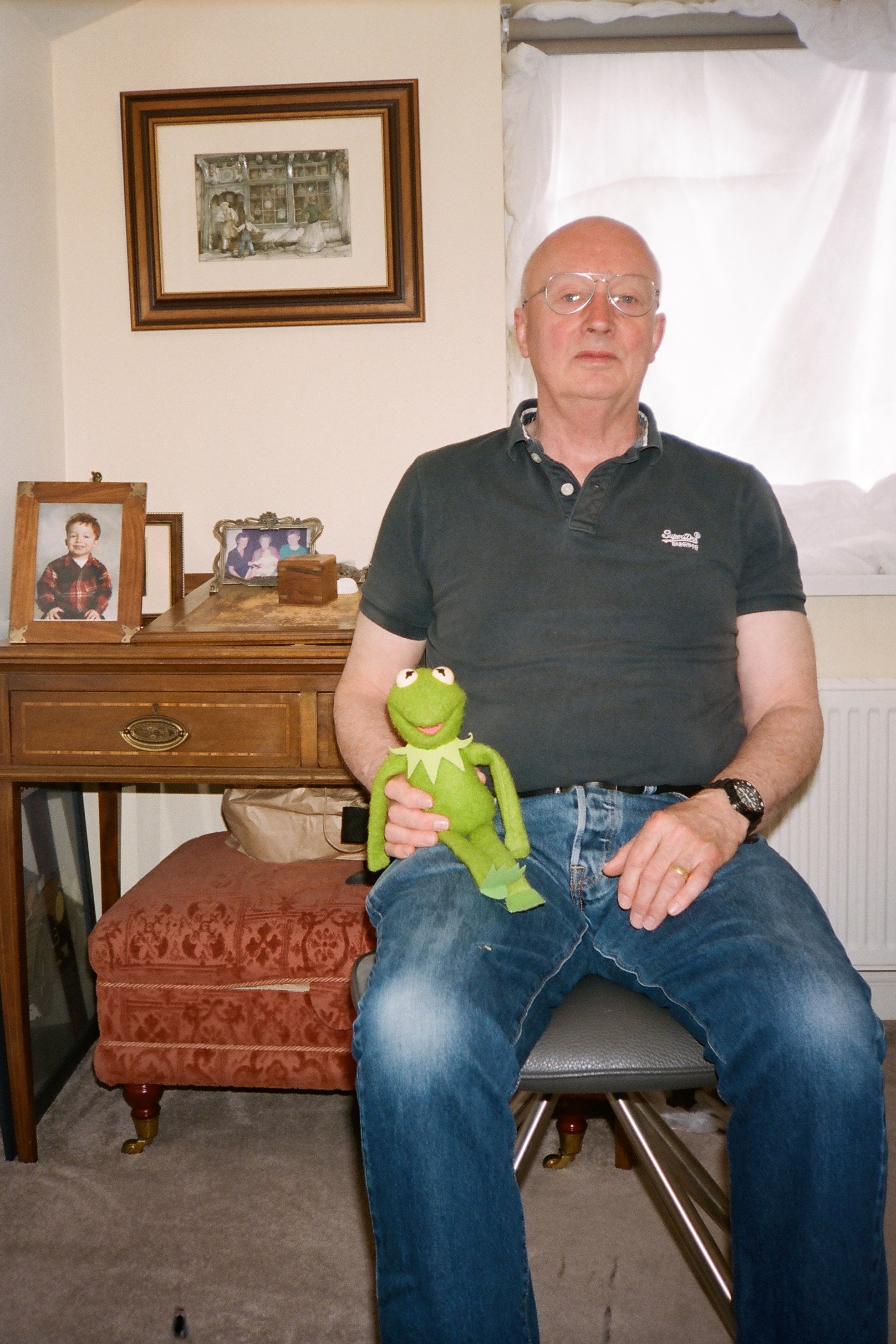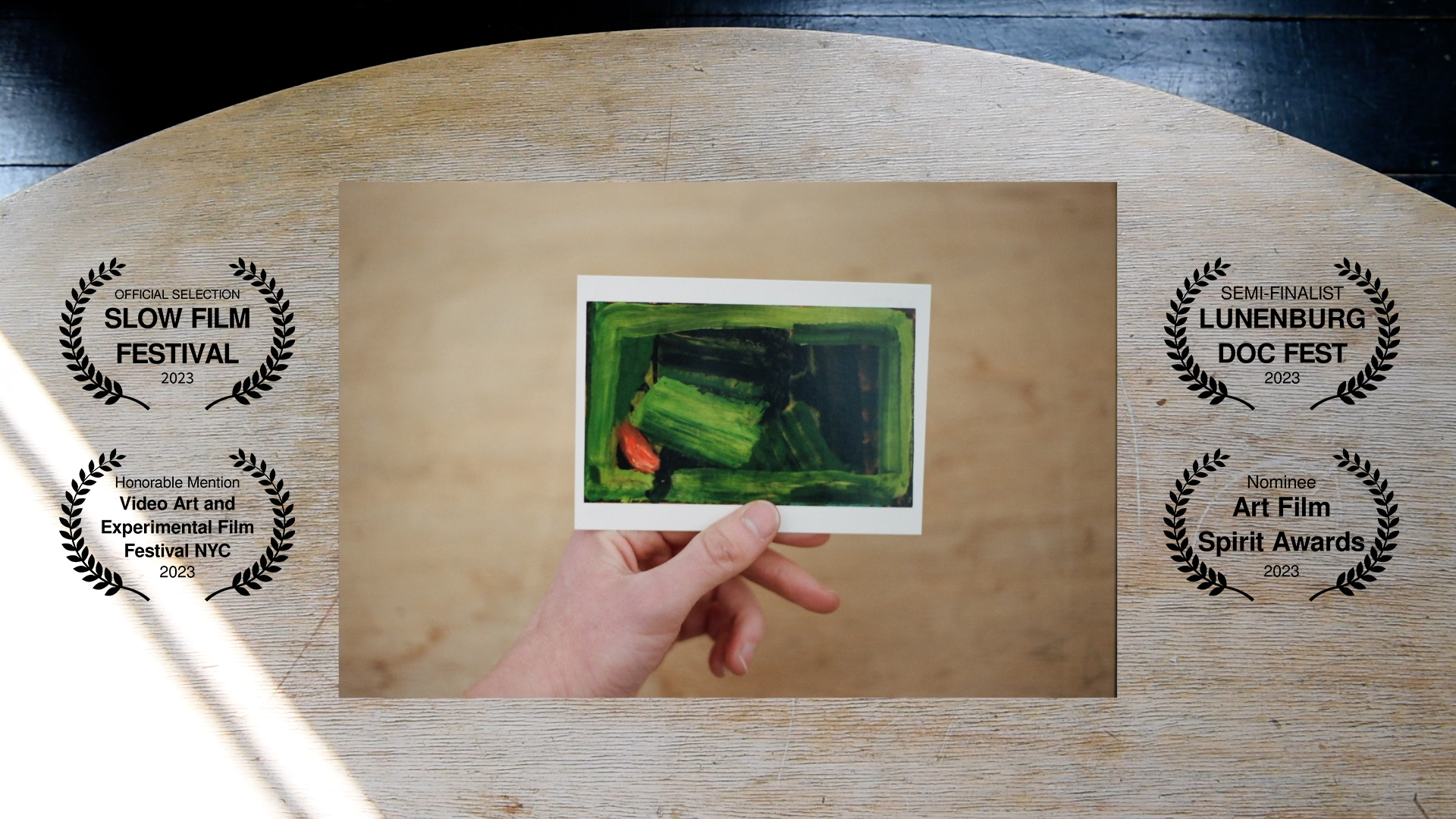Lindisfarne One One, HD video, 4 minutes 25 seconds
Lindisfarne One One is a silent black and white, digital film shot on the tidal island of Lindisfarne, Northumberland. The film deals with personal and historical loss, reflecting on first hand memories of the location as well as its representation within cinema, most notably the film Cul-De-Sac (1966) whilst drawing on tropes from Wim Wenders’ Road Movie trilogy and Chris Petit’s Radio On (1979). The narrative is driven by a stack of analogue photographs, in which a hand removes the images one by one.
Selected exhibitions:
Salon in Sabina, Demoni Danzanti, Torri in Sabina, Italy, October 2022
BALTIC Centre for Contemporary Art: BALTIC open, May 2021 - September 2021
Serpentine Cinema & General Ecology: On Earth at the Long Now, Kraftwerk Berlin, March 2019
Serpentine Cinema: On Earth, Missing and Memory, Peckhamplex Cinema, London, January 2019
South Kiosk Gallery, Togetherness: Notes on Outrage, London, 2016
Festival di Spoleto 59, Sala Pegasus Cinema, screening with Julie Born Schwartz, Italy, 2016
MONO 5.1 screening, Reykjavik, Iceland, March 2016
MONO 5, screening, Courtyard Theatre, London, February 2016
Second, HD video, 2 minutes 15 seconds
Second takes place in the same location that features in the Michelangelo Antonioni film The Passenger, 1975. In The Passenger, the character David Locke returns to his London home after assuming the identity of a dead businessman. In the scene in which he returns he has a flashback to a time with his estranged wife in this house – this memory then slips into his wife’s perspective of the same moment. The camera itself, silence and the layering of two specific sounds became the way I approached this location and its relationship with memory.
Made with the support of The Institute of Contemporary Art, London (ICA) and Channel 4 Random Acts.
Selected exhibitions:
Playback Festival 2018 in Association with Random Acts, ICA, London, March 2018
Playback Festival in Association with Random Acts, Touring Exhibition, Arnolfini, Bristol, August 2017
Playback Festival in Association with Random Acts, ICA, London, March 2017
Festival di Spoleto 59, Sala Pegasus Cinema, screening with Julie Born Schwartz, Italy, 2016
Channel 4 Random Acts, Fist Acts, Online programme, 2016
STOP PLAY RECORD screening, ICA, London, July 2016
The Idealist and The Contrarian, is a series of ten films made in collaboration between Matthew Burdis and Jon Baker. The films were made to the following rules.
- All films will be 16mm colour, silent and 3 minutes in length.
- When one artist has completed a film reel it must be passed on to the other artist who will film onto the same reel – creating a double exposure.
- There will be no discussion between artists regarding subject matter or content.
“The rules, set by ourselves as well as the limitations of the medium, created a mutual way of working together that was important due to the lack of communication between us.
Having both created a double exposed film collaboratively, yet separately, we would watch the finished film alone. Each film responds to the previous film in the series, creating a visual dialogue between us both: at times pre-empting each other's decisions, mirroring previous endeavours and occasionally destroying current ones.”
This work was supported by the Elephant Trust and was influenced by Sigmar Polke’s 16mm films shown at Tate Modern in 2014.
Contemporary Istanbul, 17th edition, Istanbul, Turkey, September 2022
Viable, YAYA, Istanbul, Turkey, (solo) The Idealist and The Contrarian made with Jon Baker, February - March 2022
Green Week Screening: Liquid Particles, RCA, ArtBar, March 2020
Serpentine Cinema: On Earth, Missing and Memory, Peckhamplex Cinema, London, January 2019
Zipped Up Blues, short excerpt.
“Matthew Burdis (Newcastle, 1993) cuts the memories of a Northumbrian police officer, sent to search the Kielder Forest for wreckage of Pan Am Flight 103 when it exploded over Lockerbie, to a sequence of period photographs. His camera inches over these images just as the speaker searched the forest floor, his colleague coming upon a flight attendant’s jacket that still carried a trace of her perfume; a most delicate work.” - Laura Cumming, The Guardian, 28/01/24
In Zipped Up Blues my dad recalls his memories of searching for the wreckage of Pan Am Flight 103, after the aeroplane was destroyed by a bomb during its scheduled flight from Frankfurt to Detroit via London and New York City on December 21st, 1988, in what is often referred to as the Lockerbie Bombing.
The fuselage crashed into Sherwood Crescent in Lockerbie and the nose cone came down on a hill outside of the town in Tundergarth. No passengers or crew survived this terrorist attack and an additional eleven residents in Lockerbie were killed.
The heavy wreckage landed in Lockerbie and it subsequently transpired that the remaining wreckage covered an area of 850 square-miles, including the Northumbrian fells, which brought it into the remit of Northumbria Police.
Each piece of wreckage no matter how small was evidence and had to be treated as such.
My dad was part of the Northumbria Police Special Patrol Group that spent just over one month searching these fells.
Audio recordings of my dad are combined with photographs, maps and cartoon imagery all connected to this time period of his life. These memories are bound to the physical items recovered on those fells and the sensory experiences that entailed.
Whilst centered primarily around the Lockerbie Bombing he meanders through his memories discussing the nature and definitions of searching, touching on the IRA bombing at the Grand Hotel, Brighton, 1984, ahead of the Conservative Party conference, to search training at military barracks during the height of The Troubles, whilst living in the aftermath of a post-miners’ strike Newcastle.
These lived through times and recollections are often activated by a detailed description of a seemingly innocuous tangible item connected to an event.
Film Festivals:
Slow Film Festival, London, Good Shepherd Studios, London, Zipped Up Blues *Official Selection* + Q&A, October 5th, 2024
Alchemy Film & Arts Festival, Hawick, Scotland, Zipped Up Blues *Official Selection* + Q&A, May 2024
Selected exhibitions:
New Contemporaries 2023, Camden Arts Centre, London, January - April 2024
New Contemporaries 2023, Grundy Art Gallery, Blackpool, September - December 2023
New Contemporaries 2023, online platform, September 2023 - April 2024

Alan Burdis, May 2022, photo by Matthew Burdis
A film by Matthew Burdis, narrated by Willem Dafoe.
Interior (The Spectator), short excerpt

Interior (The Spectator) contemplates Burdis’ relationship to the painter Howard Hodgkin. The film is narrated by Willem Dafoe.
The highly personalised domestic interior of Hodgkin’s London home becomes a container to explore this relationship: as objects and belongings draw out themes of personal loss, memory and identity.
Seemingly beginning as a memoir, the narration and images directly correspond to each other. This structure begins to fracture as images disjoint from the text, before reconnecting at particular moments. The script is collaged from personal writing, gathered quotes and references to literary sources to create an equivocal identity.
Exhibitions and Screenings:
March edition, Art Station Film, screening of Interior (The Spectator), Saxmundham, UK, March 22nd 2024
The Ingram Prize 2023, Cromwell Place, London, November 2023
Film Festivals:
Art Film Spirit Awards, Toronto, Ontario, Canada, Interior (The Spectator) *Nominee*, December 2023
Video Art and Experimental Film Festival, New York City, United States, Interior (The Spectator) *Honorable Mention* November 2023
Slow Film Festival, London, Good Shepherd Studios, London, Interior (The Spectator) *Official Selection* October 21st - 22nd, 2023
Lunenburg Doc Fest, Nova Scotia, Canada, Interior (The Spectator) *Semi-Finalist* Experimental Short Documentary, September 2023